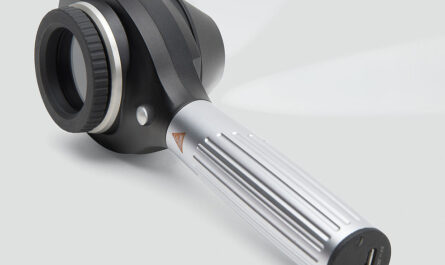Mechanical Ventilators – A Lifesaving Medical Device
Mechanical ventilators, also known as breathing machines, are medical devices that provide mechanical ventilation by moving breathable air into and out of the lungs. They are primarily used to help patients breathe when they are physically unable to breathe on their own or breathe sufficiently. Modern ventilators are highly complex and sophisticated digital devices that are life-saving when used appropriately.
History of Mechanical Ventilators
The early concepts of artificial ventilation can be traced back to the 16th century. However, the modern mechanical ventilator was primarily developed in the 1950s due to the polio epidemics. In the 1960s and 70s, there were rapid advancements in microprocessor technology which allowed ventilators to perform more complex functions. Some of the key developments include the addition of positive end-expiratory pressure in the 1970s and various modes of ventilation in the 1980s and 90s. Today, intensive care ventilators use advanced digital controls and monitors to help patients with various respiratory conditions.
Components and Functions
A modern mechanical ventilator consists of several key components that work together to provide artificial ventilation. It has a gas source such as an oxygen cylinder or wall supply, filters to remove contaminants from the gas, a compressor or valves to generate pressure and control gas flow, an airway circuit to connect the ventilator to the patient, and a control system with monitors and alarms.
The basic functions of a ventilator include triggering the start of inspiration, delivering a specified tidal volume at a set rate, and adjusting inspiratory and expiratory times according to the ventilation mode. Advanced ventilators can perform more complex modes such as pressure support ventilation, volume-controlled ventilation, and non-invasive ventilation using face or nasal masks. Ventilators also integrate monitors for various parameters like breaths per minute, tidal volume, oxygen saturation, airway pressures, and expired carbon dioxide levels.
Usage and Modes of Ventilation
Mechanical ventilators are primarily used in critical care settings like intensive care units and operating rooms when a patient’s own breathing drive and lung function are severely compromised. They are life-saving for conditions like respiratory failure, opioid overdose, acute exacerbation of chronic respiratory illness, general anesthesia during surgery, and neuromuscular disorders.
The mode of ventilation depends on the patient’s specific condition and treatment goals. The basic modes include controlled mandatory ventilation which is fully controlled by the ventilator, assisted/supported ventilation where the patient participates in breathing, and continuous positive airway pressure used for respiratory distress. More specialized modes help with specific situations like lung protective ventilation for acute lung injury, high-frequency oscillatory ventilation for respiratory distress syndrome in infants, and inverse ratio ventilation for severe airflow obstruction.
Proper Usage and Complications
While mechanical ventilators save numerous lives, improper use can also lead to complications in some cases. Ventilator-induced lung injury is a major concern if the lungs are over-distended or damaged by excessively high pressures. Infections are another risk if breathing circuits are not properly sterilized. Patient-ventilator asynchrony occurs if the breathing patterns are not well-coordinated. Other rare issues include pneumothorax due to barotrauma, damage to the vocal cords and trachea, and medication errors. Proper protocols, training of healthcare staff, regular monitoring and maintenance are vital to minimize complications from long-term ventilator dependence.
Future Directions
Research into mechanical ventilation is ongoing to develop more advanced life-support capabilities. Some areas of active work include developing new modes of ventilation tailored for specific lung diseases, compact portable ventilators for transport and disaster situations, closed-loop systems with automated adjustments based on patient-monitoring, advanced interfaces like helmet ventilators, and integration with technologies like augmented reality for improved training and real-time guidance. Artificial intelligence and machine learning techniques also show promise to provide personalized ventilation strategies in future. Overall, mechanical ventilation will likely become even more sophisticated to precisely and safely meet complex lung failure scenarios.
Mechanical ventilators have revolutionized the management of respiratory failure and greatly expanded treatment capabilities for critically ill patients over the last few decades. As the technology evolves further through ongoing advancements, these life-saving breathing machines will be able to support patients in more targeted and comfortable ways. Proper usage, training and preventative maintenance remain important to maximize benefits while minimizing risks from long-term ventilator dependence.
Note:
1. Source: Coherent Market Insights, Public sources, Desk research
2. We have leveraged AI tools to mine information and compile it




